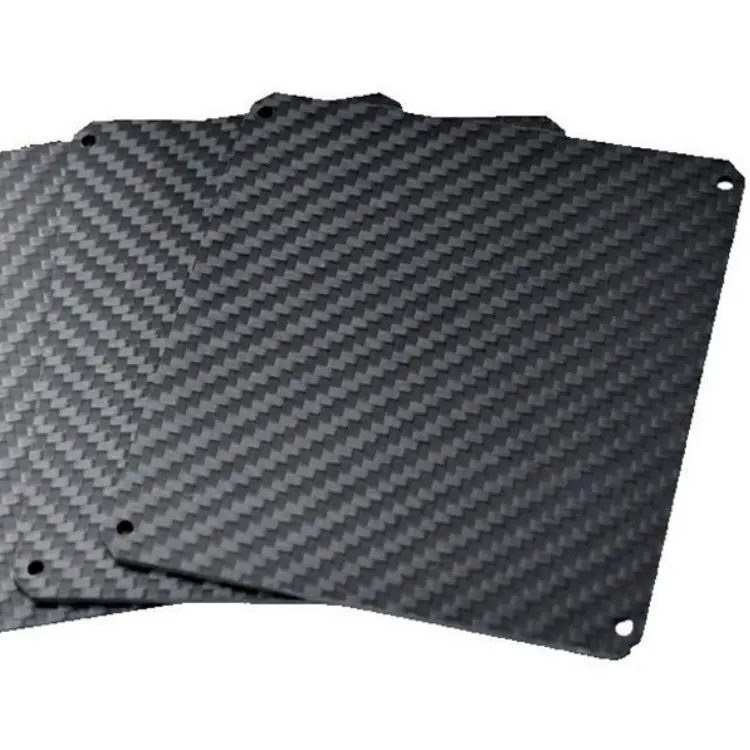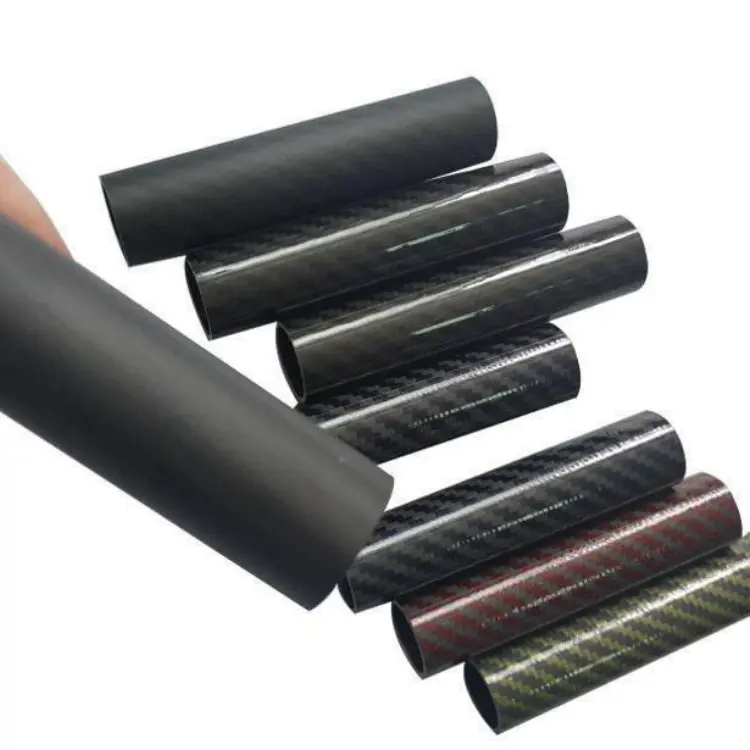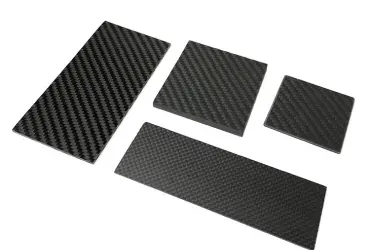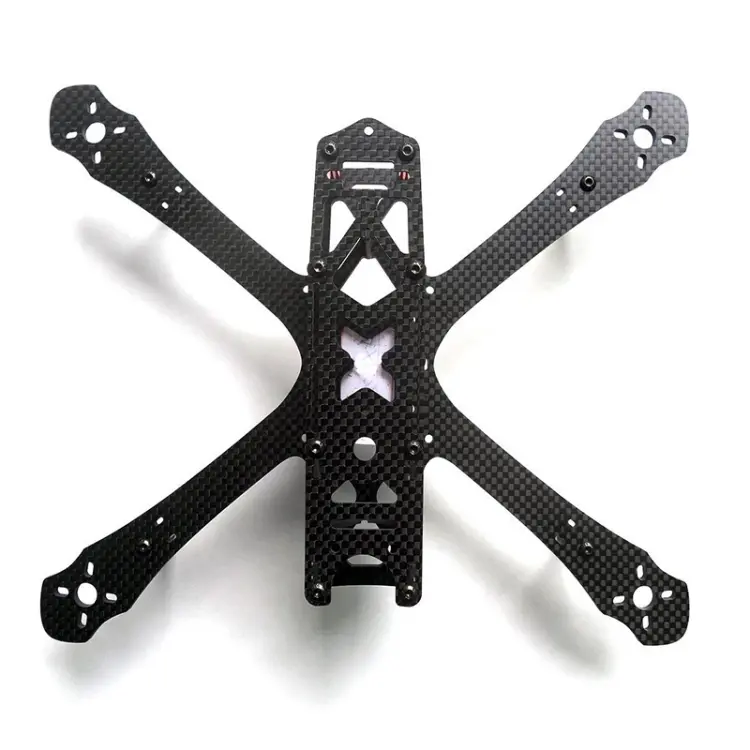1. Quick Conclusion
3K carbon fiber belongs to the small-tow carbon fiber category (each tow contains 3,000 filaments). Its main benefits are a smooth weave, excellent drape on curves, and reliable mechanical properties. This makes it ideal for high-end manufacturing and applications where appearance matters. Large-tow carbon fibers, like 12K and 24K, are cheaper and easier to process. This makes them great for mass production in the industry. The main difference is in tow specifications. You should balance “performance precision requirements” with “cost-control objectives.”

2. Performance Comparison
| Metric | 3K carbon fiber | Large-tow carbon fiber (e.g., 12K) | Key factor |
|---|---|---|---|
| Tow specification | 3,000 filaments per tow, fine tow | ≥12,000 filaments per tow, coarse tow | The “K” value determines tow diameter and filament density |
| Surface quality | Fine woven texture, smooth surface | Coarser weave, more rugged appearance | Fine tows enable higher weave precision for aesthetic parts |
| Processing adaptability | High flexibility, conforms to complex curves, resists wrinkling | Stiffer, harder to conform to sharp angles/curves, prone to wrinkling | Smaller tows improve drapeability |
| Resin impregnation | Shorter penetration paths, more uniform impregnation without defects | Core regions may remain dry; special infusion required | Tow size affects resin penetration efficiency |
| Mechanical uniformity | Load is distributed; stronger resistance to local breakage | Coarse texture, higher risk of local stress concentration | Filament distribution density controls load stability |
3. Cost and Life Estimation Method
(A) Cost Estimation Logic
Raw material cost: Large-tow carbon fiber costs less per unit weight. A 12K tow is about four times more efficient than a 3K tow. This means lower filament separation costs.
Processing cost: 3K needs high-precision weaving equipment (tolerance ≤ 0.1 mm). So, processing costs are usually 30%–50% higher than for large-tow. Large-tow works with standard winding gear. This cuts process costs, but it might raise the investment needed for resin infusion equipment.
Volume discounts: Bulk buy discount for 3K (≥1,000 m²) is typically ≤15%; for large tow (≥5,000 m²), discounts can exceed 30%.
(B) Service Life Estimation Logic
Core influencing factors:
Resin Impregnation Completeness: 3K offers better uniformity in impregnation. This results in improved life stability.
Service Environment: High temperatures and corrosion speed up aging.
Load Type: 3K typically shows better fatigue resistance under dynamic loading.
Reference calculation:
Estimated life = Base life (based on carbon fiber grade, like T700 = 15 years) × Impregnation coefficient (3K: 0.9–1.0; large tow: 0.7–0.9) × Environment coefficient (ambient dry = 1.0; humid/heat = 0.7).
Maintenance impact: After the protective coating sustains damage, corrosion in 3K fibers spreads about 40% slower than it does in large-tow materials. This is because 3K fibers have denser packing.
4. Recommended Application Scenarios
| Application | Prefer 3K carbon fiber | Prefer large-tow carbon fiber |
|---|---|---|
| Aerospace | Satellite structural components, UAV fuselages (weight reduction + surface precision) | Rocket fairing support structures (low cost + large size) |
| Sporting goods | High-end tennis racquets, skis (vibration damping + refined hand feel) | Entry-level bicycle frames (cost control + basic strength) |
| Automotive | Supercar interior panels, lightweight driveshafts (complex surface conformance) | Commercial vehicle chassis reinforcements (mass production + high stiffness) |
| Industrial equipment | Precision medical instruments (prosthetics/orthoses) | Wind turbine blades, large pressure vessels (large size + low unit cost) |
| Construction strengthening | Historic building component restoration (appearance matching + fine fitting) | Bridge strengthening beams (fast layup + cost advantage) |
 5. Procurement Checklist
5. Procurement Checklist
Specify two markings clearly:
Must suppliers state “3K + carbon fiber grade (e.g., T700).”
Avoid vague “carbon fiber” labels to stop sellers from passing off 12K as 3K.
Verify filament density under a microscope.
Verify resin impregnation report: Focus on “impregnation uniformity” — need ≥98% for 3K and ≥95% for large tow, with accompanying ultrasonic scan charts.
Confirm supplier qualifications: For 3K, focus on aerospace-grade suppliers (AS9100 certified). For large tow, industrial suppliers with ISO 9001 suffice. Avoid cross-grade procurement that causes a price premium.
Allow process adaptation margin: For complex curves, increase the 3K order quantity by 10%. This helps cover cutting and waste. For large tow, confirm that the supplier supports RTM/infusion equipment.
Agree on warranty terms for life:
Need fiber-grade test reports (like T300/T700).
Include a clause for returns or replacements if defects shorten the service life.
6. Best-fit Customer Profiles
3K carbon fiber is ideal for mid-to-high-end manufacturers. It offers “high performance + aesthetic precision + complex structure conformance.” This makes it perfect for aerospace suppliers and premium sporting goods brands. Large-tow carbon fiber suits industrial customers. They focus on cost control, mass production, and simpler structures. This includes wind turbine makers and construction reinforcement contractors.

 5. Procurement Checklist
5. Procurement Checklist



